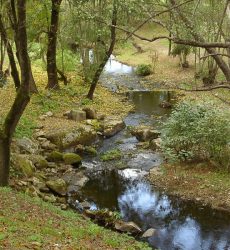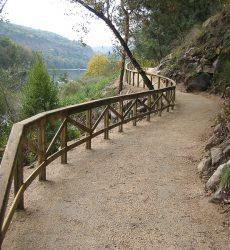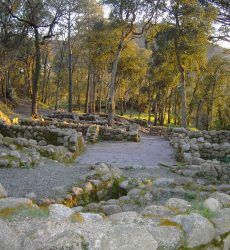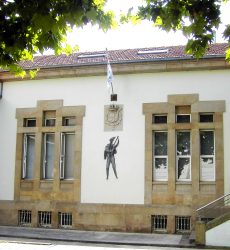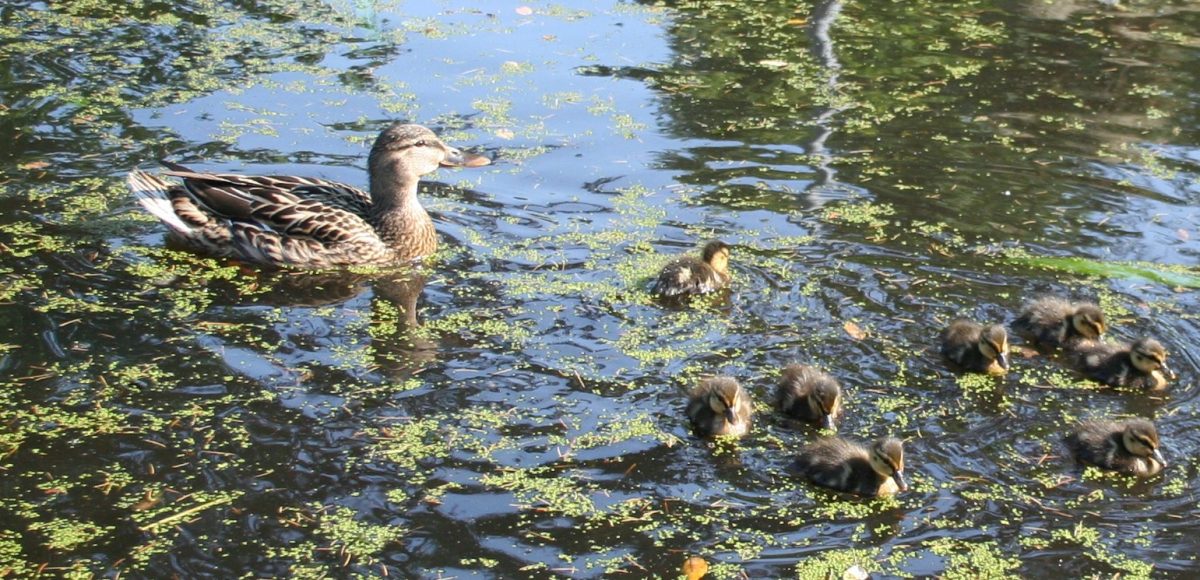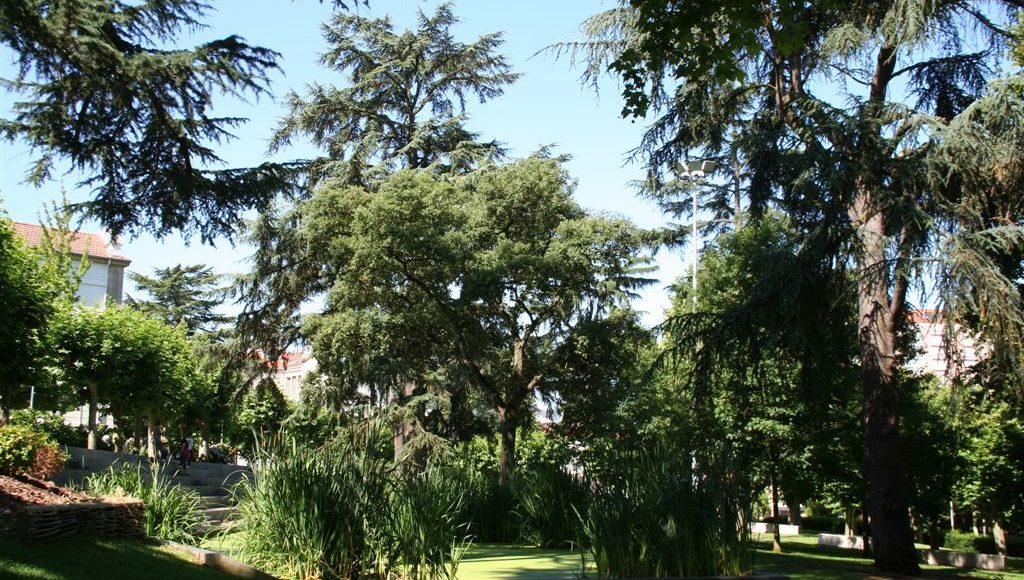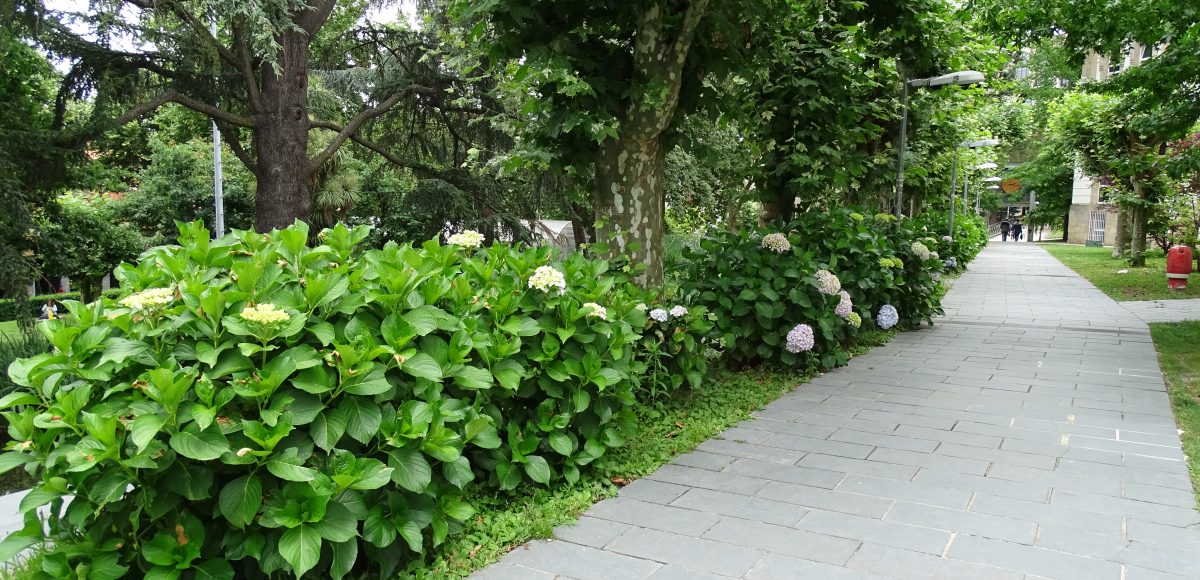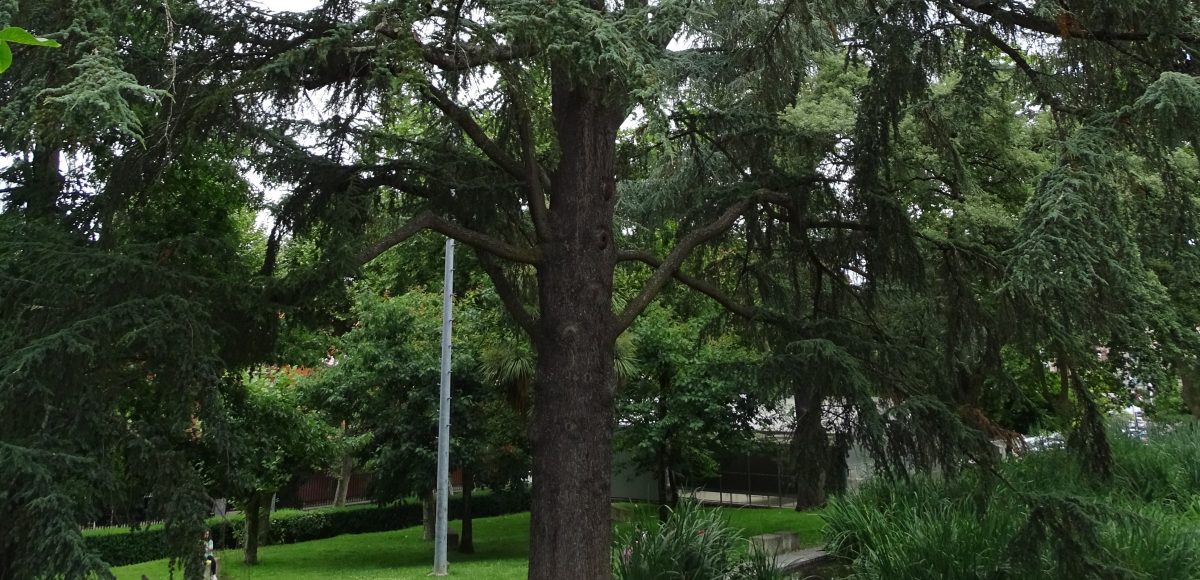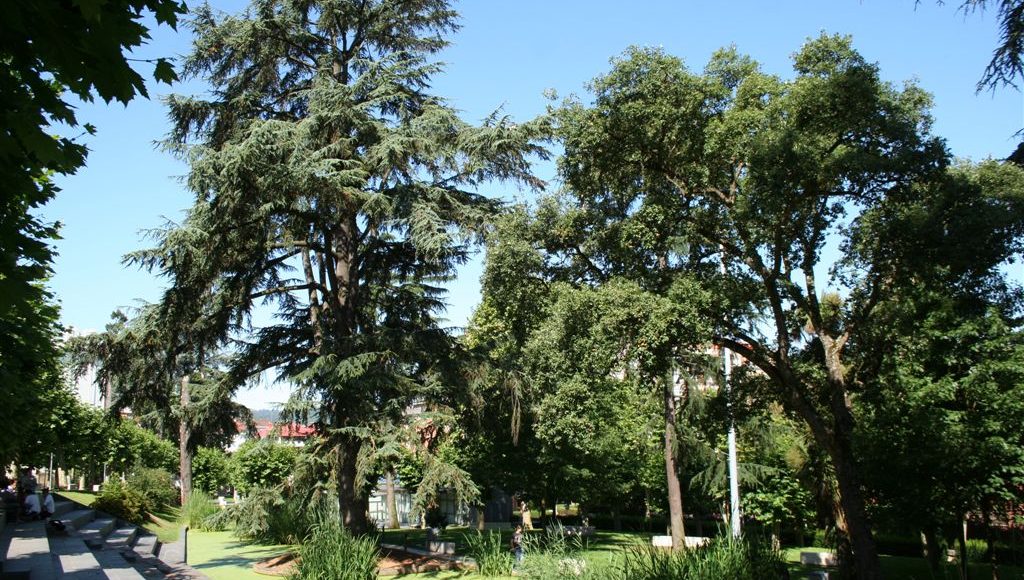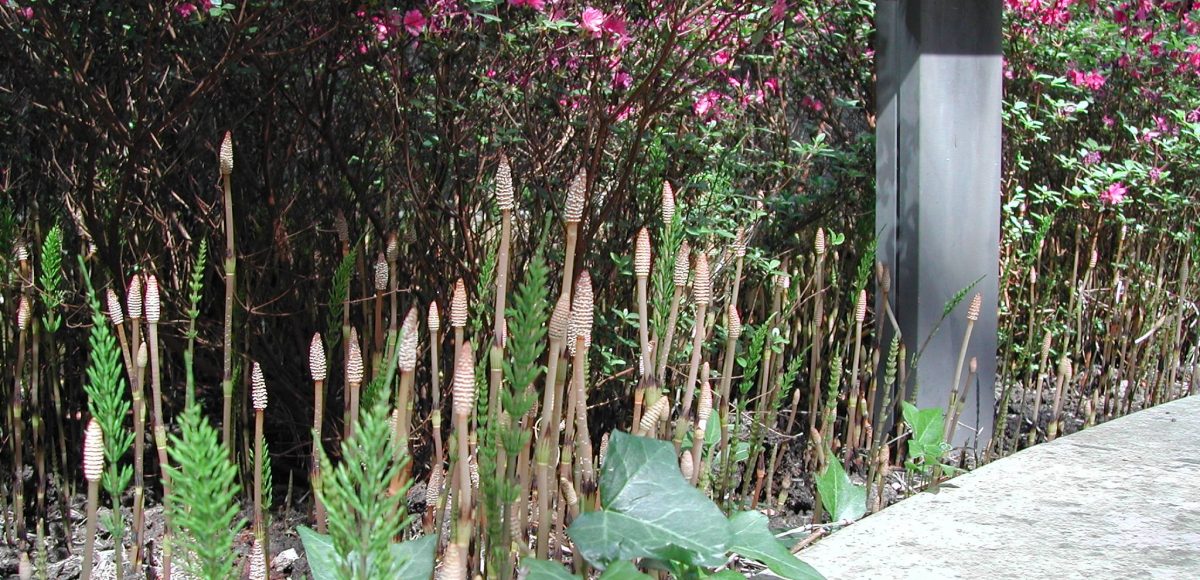
University Campus Park
Campus de Ourense, 32004
The great diversity of tree specimens, as well as its informative approach, have turned the Ourense University Campus into an authentic botanical garden.
Ourense’s university area accommodates one of the most unique green spaces in the city. This park, which extends across both the north campus and the south campus, has become one of the most emblematic in Ourense thanks to its botanical diversity, as well as other cultural and educational elements.
Each area has its personality: while the north campus is characterized by historic buildings and large trees, the south campus is distinguished by its more modern constructions and the use of ornamental meadows.
North Campus: The Old Provincial Hospital
The North Campus is located on the grounds of the former provincial hospital. The unique sanitary facilities, which date back to the early 20th century, today have other uses and are alternated with more recent buildings.
Here are the oldest and largest trees in the area. Some specimens, which date back to the beginnings of the old hospital, are around a hundred years old. Perhaps the best example is the Oregon pines, which reach 40 metres in height. Also from this time are the banana trees, the most abundant species in this park.
Along with the centuries-old trees, the presence of the four recognized species of cedars stands out, being this an exceptional case within Spain.
The veteran specimens coexist with new plantations that diversify the natural wealth of this space. The presence of the four recognized species of cedar stands out: the Atlas cedar (Cedrus altantica), the Himalayan one (Cedrus deodara), the Lebanon one (Cedrus libani) and the Cyprus one (Cedrus brevifolia). The existence of the four species of cedars in the same space is an exceptional case within Spain. There are also such emblematic specimens as the Sequoiadendron giganteum or the Ginkgo biloba, as well as such showy species as, for example, maples, araucarias and sweetgums.
The lower part is occupied by an artificial pond, inhabited by various amphibians and birds, such as the friendly mallard-type ducks, a nice surprise for the children.
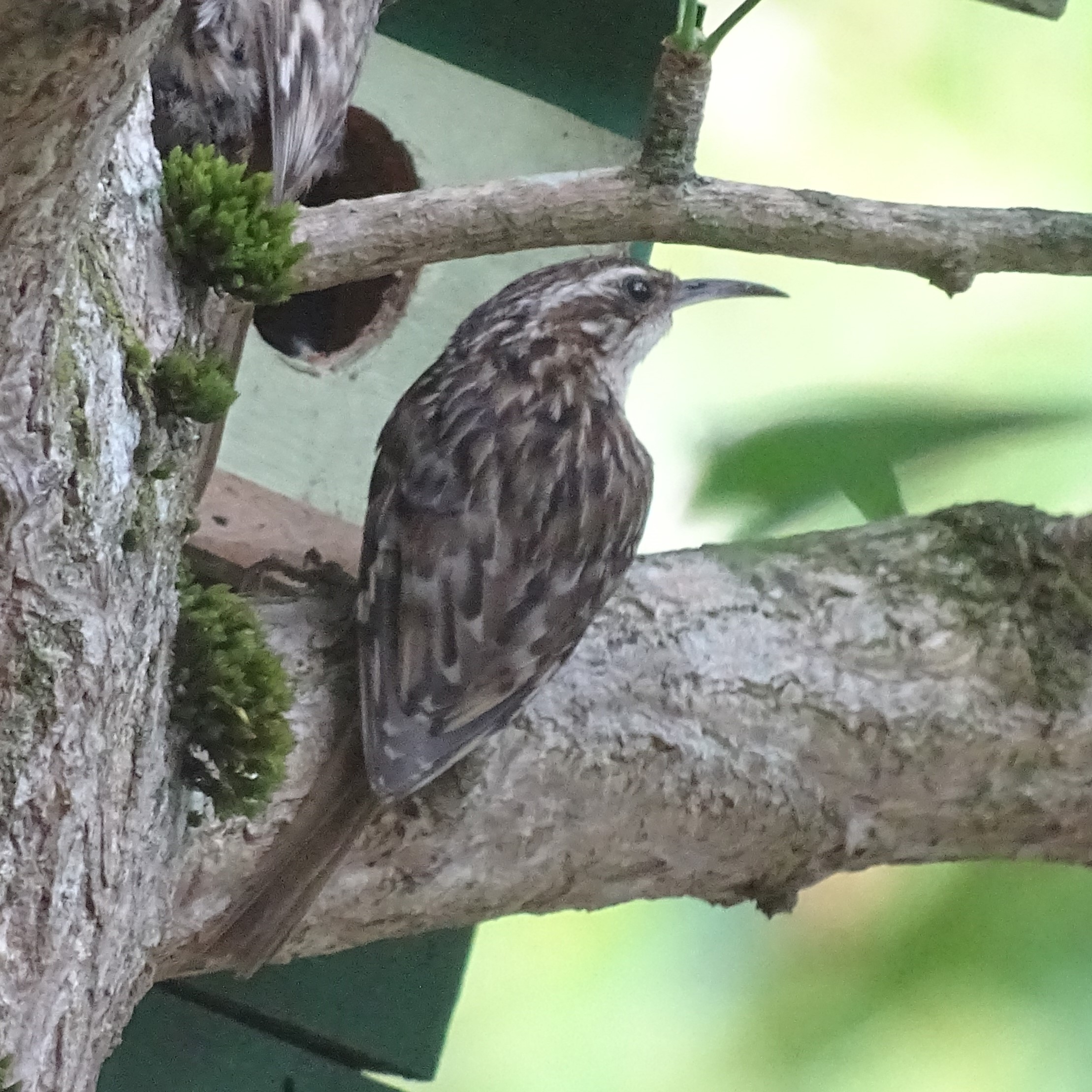
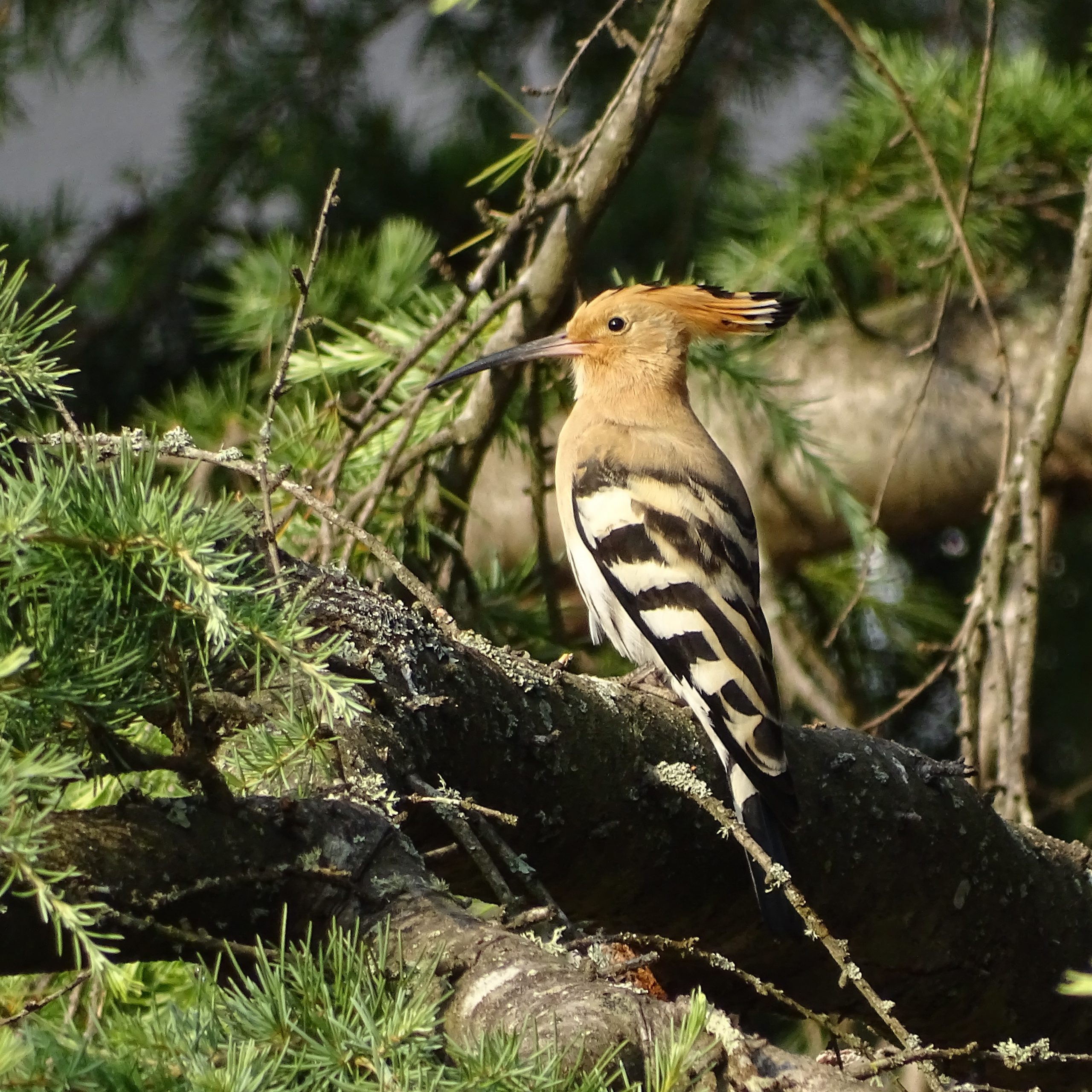
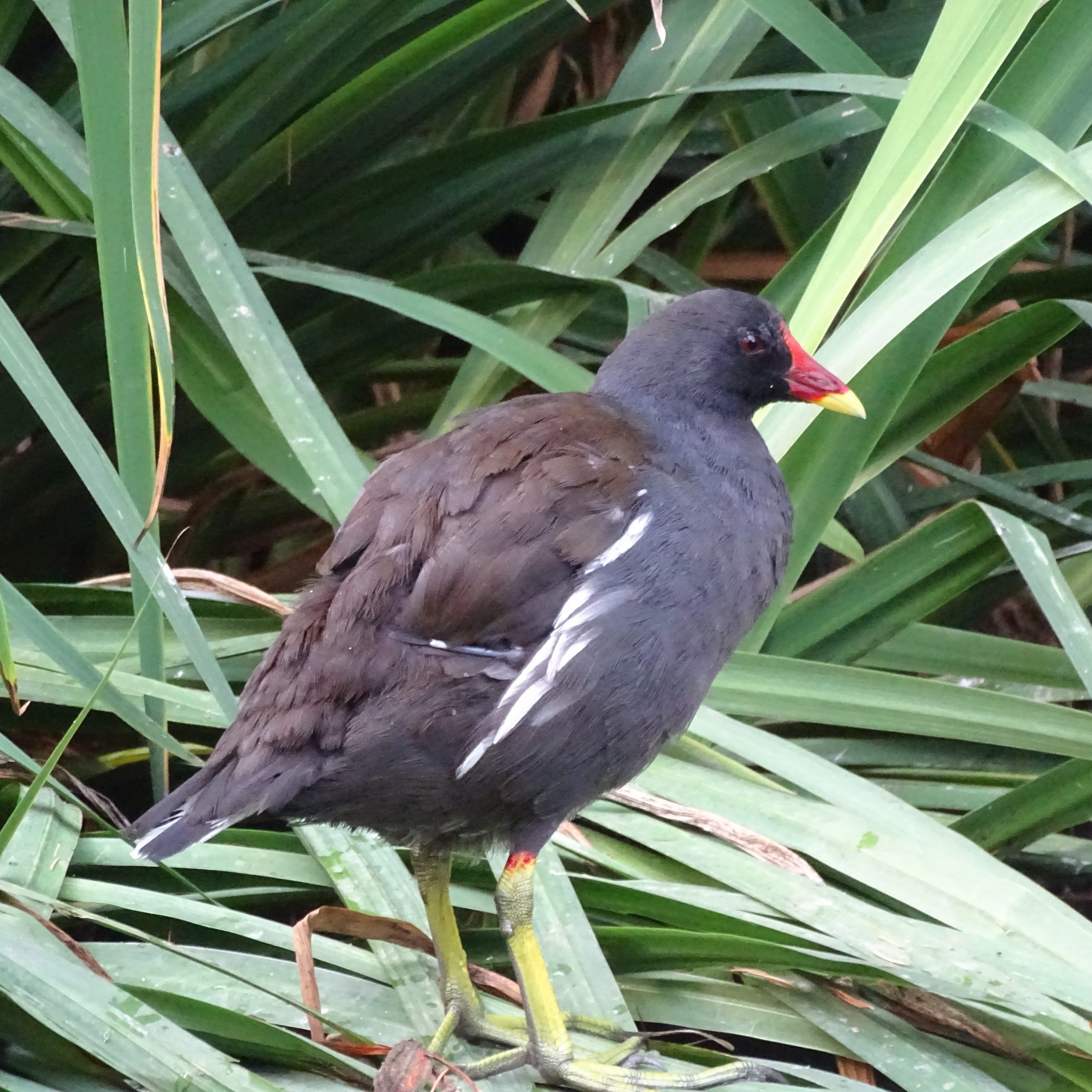
South Campus: The Most Modern Area
The southern area, also called Campus da Auga, is located in a larger space, dominated by ornamental meadows created with native grasses that are better suited to withstand the traffic of people. There are also a large number of tree species, although they are more recently planted. At the upper part, the green barrier composed of laurels, strawberry trees and leafy trees draws attention. The central part is dominated by an enormous sculpture, dedicated to the Xeración Nós literary group, which is made up of a large granite monolith crossed by metal pieces.
Educational Resources
The university campus has become an authentic botanical garden in which native species are combined with more exotic specimens. To promote their knowledge, the University of Vigo has made information plaques about many of its trees available to those most interested (downloadable sheets), as well as a digital map with the names and locations of all the existing trees, which can be consulted at this link.
They have also published a digital guide with detailed information about the trees in this space that can be downloaded at this link (in Galician). In addition, in the surroundings of the pond there are several information plaques about its fauna and flora.
The Ourense Campus has created a digital map with information on all the tree specimens in this space.
Cultural Space
In addition to its natural interest, the campus also stands out for its cultural value, not only from an educational but also an artistic point of view. On the one hand, there are different artistic works spread throughout this space, especially sculptures. Along with the aforementioned tribute to the Xeración Nós on the south campus, there are such unique pieces as the Path towards Equality (a tribute to women who stood out in different fields in the history of humankind); the Owl of Wisdom, a sculpture by Eugenio Linares made from the dead trunk of a cedar tree on which an owl has been carved on a pile of books, or the gigantic mosquitoes sucking books from the Rosalía de Castro Library.
This venue has two exhibition halls, on the one hand the Alterarte Gallery which houses temporary exhibitions of the most innovative art, as well as the Bagpipe Museum, located in the building of the Royal School of Bagpipes, which houses a collection of bagpipes from of all the world. Very close to the campus, on Benito Vicetto Street, is the Marisa Marimón gallery, one of the most emblematic in the city.
Attractions Nearby
Close to the university campus are two elements of outstanding natural value, such as the Sobreira da Loña, a formidable cork oak that is part of the Galician Catalogue of Unique Trees, and the archaeological-natural site of Santomé, which can be accessed through a beautiful path that runs along the Loña river.
– Guide the Campus Trees. University of Vigo (pdf, in Galician)
– Interactive Map of Ourense Campus Trees (Google Maps)
– Tree information panels (pdf, in Galician)
A different and healthy way of getting to know Ourense is to get out of its urban centre to discover its green belt, ideal for hiking. The gentle orography invites you to take long walks through landscapes and places of great natural, historical and ethnographic interest; trails, paths and tracks that will take you through magical places.
A place where the past and nature meet, Santomé is a magnificent indigenous forest that hides an archaeological site where the Celtic and the Galician-Roman cultures coexisted .
A unique kind of museum, keeping a huge collection of bagpipes from around the globe.

